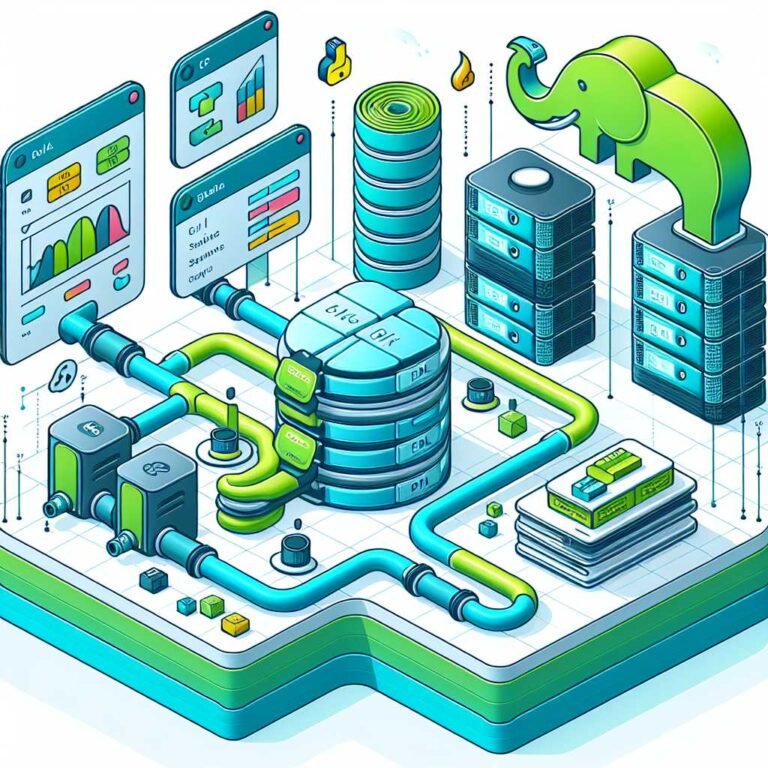Modern Data Lakehouse Architecture: Build a Unified Data Platform That Actually Scales
If you’ve been juggling data lakes for raw files and data warehouses for curated analytics, you’ve likely felt the friction: duplicated pipelines, slow iterations, and spiraling storage costs. The modern data lakehouse promises a way out—a single platform that gives you the elasticity of a lake and the governance and performance of a warehouse.
But here’s the catch: a lakehouse isn’t one tool you buy. It’s an architectural pattern you design with the right standards, formats, and services. Choose poorly and you’ll inherit yesterday’s problems in a shinier wrapper. Choose wisely and you’ll unlock a durable, future-proof foundation for analytics, machine learning, and real-time decision-making.
What is a Modern Data Lakehouse?
A modern data lakehouse blends low-cost, cloud object storage with warehouse-style features. Think of it as a “warehouse brain” sitting on top of “lake-scale storage.” It uses open table formats and a common metadata layer to provide ACID transactions, schema evolution, time travel, and fine-grained governance—without locking you into one compute engine.
In practice, that means: – Store data once in cloud object storage (Amazon S3, Azure Data Lake Storage, Google Cloud Storage). – Use open table formats like Delta Lake, Apache Iceberg, or Apache Hudi to bring structure, reliability, and transactional semantics. – Query the same tables from multiple engines (Spark, Trino, Presto, Snowflake’s external tables, or BigQuery’s open-format support).
The payoff is big: one set of data, many workloads, and less operational drag.
In short, you unify your storage and metadata so ingestion, analytics, data science, and streaming can share the same backbone.
Why the Lakehouse, and Why Now?
Three trends made the lakehouse practical: 1. Open table formats matured. Delta Lake, Iceberg, and Hudi now deliver reliable transactions, scalable metadata, and streaming/CDC support. 2. Compute engines got flexible. Engines like Apache Spark and Trino run on Kubernetes or cloud-native services with elastic scaling. 3. Cloud object storage is cheap and durable. You don’t need to load data into proprietary storage to get fast queries.
The result is a platform where: – Data teams iterate faster without constant ETL hops. – ML teams train on the exact same, governed tables analysts use. – Real-time and batch peacefully coexist.
And you can do all that without binding your future to one proprietary vendor.
As you lean into this approach, you’ll want a practical, step-by-step guide for implementation across formats and cloud options—want a deeper, step-by-step playbook—Shop on Amazon.
Core Components of a Lakehouse Architecture
To build a lakehouse that lasts, get the building blocks right.
Storage Layer: Object Storage as Your Source of Truth
Use S3, ADLS, or GCS for the durable, low-cost lake. Organize data with clear boundaries: – Bronze: raw, immutable ingest. – Silver: cleaned, conformed tables. – Gold: aggregated, business-ready data.
Partition by date or natural keys for predictable access, and enforce naming conventions so your catalog stays sane.
Table Format: Delta Lake vs. Apache Iceberg vs. Apache Hudi
Your table format is the foundation for transactions, schema changes, time travel, and more. – Delta Lake: Strong ecosystem, great with Spark and Databricks, robust time travel and DML. – Apache Iceberg: Engine-agnostic, scalable metadata, hidden partitioning, broad community adoption across Spark/Trino/Flink. – Apache Hudi: Built for streaming/CDC, supports upsert-heavy workloads and incremental pulls.
Choose one as your standard for simplicity, but know where each shines (more on that below).
Compute Engines: Pick More Than One
Query with Spark for ETL, Trino/Presto for interactive SQL, and pushdown ML training where it fits. Keep engines decoupled from storage so you can upgrade without migrating data.
Metadata and Catalog
Use a unified catalog (Hive Metastore replacement or engine-agnostic catalog like the Iceberg REST catalog or Glue Data Catalog) to register all tables. This is your system of record for schema and discoverability.
Ingestion and Streaming
Batch ingestion is still common, but many lakehouses depend on streaming and change data capture: – Streaming with Apache Kafka or managed equivalents for real-time feeds. – Apache Flink or Spark Structured Streaming to land data with exactly-once guarantees. – CDC connectors to keep full-fidelity history.
Orchestration and Lineage
Use Apache Airflow, Dagster, or Prefect for orchestration. Capture lineage with OpenLineage so you can trace where data came from and how it transformed.
Data Quality and Observability
Automated checks keep trust high: – Expectations frameworks like Great Expectations. – Freshness and volume monitors for early warnings. – Data contracts for key interfaces.
Governance, Security, and Access Control
Centralize policies: – Fine-grained access with Apache Ranger or cloud-native controls like AWS Lake Formation. – Masking and row-level filters for sensitive data. – Auditing and compliance with GDPR and sector-specific regulations.
Ready to upgrade your data platform skills—Check it on Amazon.
Choosing Your Table Format: Delta vs. Iceberg vs. Hudi
Your table format shapes everything from performance to governance. Here’s the practical guidance.
Delta Lake: Reliable, Feature-Rich, Spark-Friendly
Delta is a strong pick if: – You’re already using Spark or Databricks heavily. – You need simple time travel, merge/upsert, and vacuuming. – You want battle-tested simplicity for batch + streaming.
Considerations: – Best-in-class on Spark; Trino/Presto support is solid but check version compatibility. – Many teams love Delta for data engineering workloads with clear DML needs.
Apache Iceberg: Engine-Agnostic and Scalable Metadata
Iceberg is great when: – You want a truly open, engine-agnostic format across Spark, Trino, Flink, and even Snowflake/BigQuery external tables. – You need hidden partitioning and advanced table evolution at scale. – You expect thousands of partitions and need high-velocity metadata operations.
Considerations: – Broad ecosystem support means flexibility over the long run. – Often the safest bet for “one format, many engines.”
Apache Hudi: Streaming and CDC First
Hudi shines if: – You ingest via CDC or require frequent upserts and incremental pulls. – You want read-optimized vs. write-optimized table types for specific query patterns.
Considerations: – Tuning is important for performance. – Excellent for near-real-time data lakes that double as downstream sources.
Comparing tools and formats for your stack—See price on Amazon.
Reference Lakehouse Blueprint (High-Level)
Let’s walk through a canonical design you can adapt.
- Ingest:
- Real-time streams from Kafka land to Bronze tables via Spark/Flink, partitioned by event time.
- Batch loads from SaaS and databases via CDC connectors land daily snapshots or incremental changes.
- Storage:
- All data lives in S3/ADLS/GCS with lifecycle rules for tiering (hot to cold storage as data ages).
- Table Format:
- Standardize on Iceberg or Delta across teams; register every table in a central catalog.
- Transformation:
- ETL/ELT in Spark for heavy transformations; Trino for ad-hoc SQL and interactive analytics.
- Medallion layers: Bronze (raw), Silver (cleaned/conformed), Gold (business aggregates).
- Access:
- BI tools point at Trino or warehouse engines with external tables.
- ML training uses the same Silver/Gold tables for consistent features.
- Governance:
- Central policy engine for row/column-level access.
- Observability and data quality checks on every critical pipeline.
- Operations:
- Orchestrate with Airflow/Dagster.
- Version data pipelines, not just code. Capture lineage for impact analysis.
Why it works: you get a single storage of truth, flexible compute, and shared governance—while avoiding lock-in.
Want to try it yourself and follow along—View on Amazon.
Data Modeling for the Lakehouse: Practical Patterns
A lakehouse doesn’t erase the need for modeling; it changes where and how you do it.
- Medallion (Bronze/Silver/Gold): Use Bronze as your immutable system of record. Silver standardizes semantics, deduplicates, and applies business logic. Gold delivers wide tables and aggregates for BI and machine learning.
- Star Schema vs. Wide Tables:
- For BI exploration, star schemas enable fast, predictable queries and caching.
- For ML feature extraction, wide, denormalized tables reduce joins and speed training.
- Semantic Layer:
- Consider a semantic layer that maps business metrics to physical tables (dbt metrics, semantic engines, or headless BI), so definitions like “Active Customer” are consistent across tools.
- Data Contracts:
- Define contracts for upstream producers feeding Bronze, including schemas, SLAs, and error handling rules. This limits breakage downstream.
Here’s why that matters: consistent semantics remove the daily friction that drains engineering time and breaks dashboards at the worst moments.
Governance, Security, and Compliance: Bake It In
Don’t bolt on governance; build it in from day one.
- Access Policies:
- Use Ranger or cloud-native controls to enforce row- and column-level access. Consider Open Policy Agent to externalize authorization logic.
- PII Management:
- Tag sensitive columns (e.g., emails, SSNs) in the catalog. Apply masking/transforms at read time for non-privileged users.
- Auditability and Lineage:
- Track data flow through OpenLineage and your orchestration tool. Make lineage visible to analysts and auditors.
- Data Retention:
- Automate retention and deletion policies to meet regulatory requirements like GDPR’s right to be forgotten.
- Change Review:
- Treat schema and policy changes like code changes. Pull requests, CI checks, and staged rollouts reduce risk.
Support our work by shopping here: Buy on Amazon.
Performance Tuning and Cost Optimization
Lakehouses can be fast and cost-efficient—if you tune them.
- Partitioning and Clustering:
- Partition on high-cardinality time columns only if queries filter by time. Use clustering (Z-order/ordering) for skewed dimensions to reduce scan.
- File Management:
- Compaction merges small files into larger ones for faster reads. Set up automatic optimize/vacuum jobs during off-hours.
- Caching:
- Use engine-level caches and result caching for frequently accessed Gold tables in BI.
- Predicate Pushdown:
- Choose formats/engines that push filters to storage-level metadata. Iceberg’s metadata pruning, for example, can skip entire files.
- Optimize Joins:
- Broadcast small dimension tables. Use bloom filters or join hints where supported.
- Storage Tiering:
- Move cold data to cheaper tiers; keep hot data in fast storage classes. Balance cost vs. retrieval latency based on SLA.
Ready to upgrade? Check it on Amazon.
Implementation Roadmap: First 90 Days
Day 0–15: Foundations – Choose your primary table format (Delta or Iceberg) and catalog strategy. – Set up object storage with clear directory conventions. – Stand up orchestration (Airflow/Dagster) and CI/CD for data pipelines.
Day 16–45: Ingestion and Core Tables – Implement two critical data sources end-to-end (one batch, one streaming/CDC). – Land Bronze, transform to Silver, and publish one Gold dataset consumed by BI. – Add basic data quality checks (schema, null thresholds, referential checks).
Day 46–75: Governance and Scale – Integrate access control, PII masking, and audit logging. – Add lineage instrumentation and observability dashboards. – Optimize file layouts, compaction, and partition strategies.
Day 76–90: Performance and Expansion – Onboard one machine learning use case using shared Silver/Gold tables. – Tackle cost optimizations (storage tiering, caching, job sizing). – Document standards and templates so more teams can self-serve.
Common Pitfalls and How to Avoid Them
- Mixing Formats Without a Plan:
- Pick one table format for 80–90% of use cases; document exceptions to avoid tooling chaos.
- Ignoring Small Files:
- Streaming and micro-batches often create thousands of small files; schedule compaction religiously.
- “Lift-and-Shift” Mindset:
- Don’t copy warehouse schemas verbatim; adapt partitioning and modeling to lakehouse realities.
- Over-Permissioning:
- Principle of least privilege. Start tight and grant as needed.
- No Observability:
- If you don’t monitor freshness, volume, and schema drift, you’ll discover failures from angry users, not dashboards.
Real-Time and ML: One Platform, Two Speeds
The lakehouse balances real-time feeds and ML training without duplicating data.
- Streaming:
- Land events in Bronze with exactly-once semantics. Upsert to Silver for deduplication and late-arriving fixes.
- Feature Engineering:
- Build features from Silver tables and track definitions in a feature store or metadata layer so models and analysts share the same logic.
- Model Training and Serving:
- Train in batch on historical snapshots (time travel helps with reproducibility). Use streaming joins to compute online features when necessary.
- Governance:
- Apply the same access policies for ML teams as analysts. ML isn’t a side door.
Cloud and Vendor Strategy: Avoid Lock-In, Embrace Choice
You can run a lakehouse on multiple stacks: – Databricks offers an integrated approach on top of Delta Lake with strong governance and performance (Databricks). – Open-source combinations like Spark + Trino + Iceberg on Kubernetes give you full control. – Cloud data warehouses increasingly query open tables externally (e.g., Snowflake, BigQuery) for hybrid patterns.
The key is keeping storage open and metadata portable. If you can swap the compute without moving the data, you’ve designed for the long term.
Comparing deployment options, services, and engines—See price on Amazon.
Buying Tips: Standards, Skills, and Specs That Matter
When you evaluate tools or platforms for your lakehouse: – Favor open table formats and engine-agnostic catalogs. – Check for native support of ACID, schema evolution, and time travel. – Confirm compatibility across Spark, Trino/Presto, and Flink versions you run. – Validate governance features (row/column masking, audit logs, policy engine). – Look for zero-copy sharing and external table support to avoid duplication. – Measure total cost: storage, compute, orchestration, and ops overhead. – Prioritize ecosystem maturity and documentation; velocity beats novelty.
If you want a concise guide that aligns these decisions into a coherent plan, compare options and frameworks—Shop on Amazon.
Frequently Asked Questions
Is a data lakehouse just marketing for a data warehouse on object storage?
No. A lakehouse uses open table formats on object storage to provide ACID, schema evolution, and time travel while staying engine-agnostic. Warehouses often rely on proprietary storage and compute. The lakehouse architecture gives you warehouse-like reliability with lake flexibility.
Do I need both batch and streaming in a lakehouse?
Often, yes. Batch is efficient for large historical loads, but streaming powers real-time analytics, CDC, and low-latency use cases. A mature lakehouse handles both and keeps the same tables consistent across speeds.
Which table format should I pick: Delta, Iceberg, or Hudi?
If you’re Spark-centric and value simplicity, Delta is great. If you need multi-engine neutrality and massive table evolution at scale, Iceberg stands out. If you’re CDC-heavy with frequent upserts, Hudi excels. Standardize on one for most workloads, and document exceptions.
Can I run BI tools directly on a lakehouse?
Yes. Use engines like Trino/Presto or warehouse external tables to query curated Gold datasets. Add caching and compaction to keep queries fast. Many teams layer a semantic model for consistent metrics.
How do I control access at the row and column level?
Use a policy engine (e.g., Ranger or cloud-native services) integrated with your catalog and table format. Tag sensitive data, define policies centrally, and enforce them at query time across engines.
What’s the best way to handle small files from streaming?
Set up automatic compaction (e.g., optimize jobs) and tune micro-batch sizes. Batch up small files into larger, well-sized blocks to improve scan efficiency and reduce query latency.
How do I keep costs under control?
Right-size compute clusters, schedule compaction during off-peak hours, use partition pruning and caching, and move cold data to cheaper storage tiers. Track cost per query and per dataset to find hotspots.
Can I migrate from an existing warehouse to a lakehouse?
Yes, but do it incrementally. Start by landing raw data in the lake, then rebuild core subject areas in the Silver/Gold layers. Run both systems during a transition period and switch workloads as SLAs are met.
The Bottom Line
A modern data lakehouse gives you a single, open foundation for analytics, machine learning, and real-time workloads. The secret isn’t a magic product—it’s the combination of proven patterns: open table formats, object storage, a unified catalog, strong governance, and flexible compute. Start small, standardize on a format, automate quality and compaction, and grow with confidence. If you want more practical guides like this, subscribe and keep exploring—your best architecture is the one your team can run every day without heroics.
Discover more at InnoVirtuoso.com
I would love some feedback on my writing so if you have any, please don’t hesitate to leave a comment around here or in any platforms that is convenient for you.
For more on tech and other topics, explore InnoVirtuoso.com anytime. Subscribe to my newsletter and join our growing community—we’ll create something magical together. I promise, it’ll never be boring!
Stay updated with the latest news—subscribe to our newsletter today!
Thank you all—wishing you an amazing day ahead!
Read more related Articles at InnoVirtuoso
- How to Completely Turn Off Google AI on Your Android Phone
- The Best AI Jokes of the Month: February Edition
- Introducing SpoofDPI: Bypassing Deep Packet Inspection
- Getting Started with shadps4: Your Guide to the PlayStation 4 Emulator
- Sophos Pricing in 2025: A Guide to Intercept X Endpoint Protection
- The Essential Requirements for Augmented Reality: A Comprehensive Guide
- Harvard: A Legacy of Achievements and a Path Towards the Future
- Unlocking the Secrets of Prompt Engineering: 5 Must-Read Books That Will Revolutionize You







